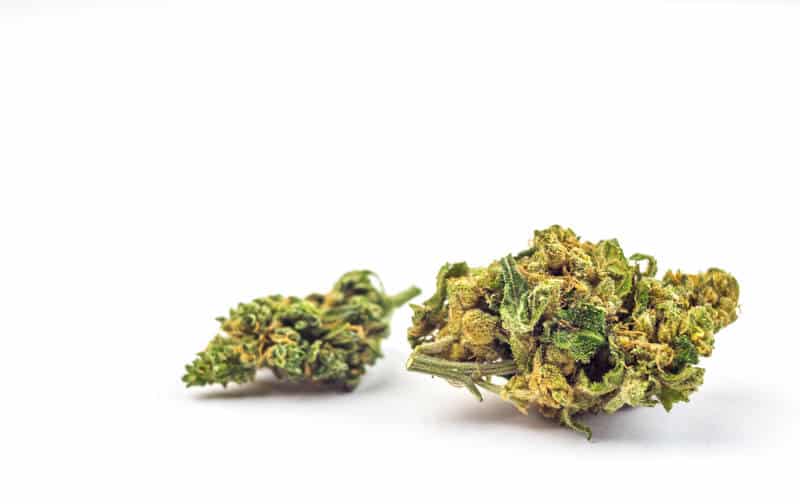THCV: The Lesser-Known Cannabinoid Explained
Cannabinoids are the chemical compounds found in the cannabis plant that interact with the body’s endocannabinoid system, producing various effects. While THC and CBD are the most well-known cannabinoids, the cannabis plant contains a myriad of other compounds, including THCV (Tetrahydrocannabivarin). This cannabinoid is a lesser-known cannabinoid that has been garnering attention for its unique properties and potential health benefits. In this article, we will explore what THCV is, its effects, potential therapeutic applications, and its prevalence in cannabis strains.
What is THCV?
THCV, or Tetrahydrocannabivarin, is a cannabinoid that shares a similar molecular structure to THC (Tetrahydrocannabinol), the well-known psychoactive compound responsible for the “high” associated with cannabis. Despite its structural similarity to THC, THCV exhibits different effects and properties. This cannabinoid is present in trace amounts in most cannabis strains, but certain varieties, particularly landrace strains from Africa and Southeast Asia, are known to contain higher levels of THCV.
Effects of THCV
THCV’s effects can vary depending on the dosage and the individual’s unique body chemistry. Research suggests that this cannabinoid may have biphasic effects, meaning it can produce different effects at low and high doses.
1. Low Doses: At lower doses, THCV is believed to act as an antagonist to the CB1 receptor, reducing the psychoactive effects of THC. This means that it may counteract some of the intoxicating properties of THC, potentially providing a less intense “high.”
2. High Doses: At higher doses, this cannabinoid is thought to act as a partial agonist to the CB1 receptor, potentially producing psychoactive effects similar to THC. However, the effects of THCV are reported to be shorter-lived compared to THC.
Potential Therapeutic Applications
While research on THCV is still in its early stages, several studies and anecdotal evidence suggest that this cannabinoid may have potential therapeutic applications.
1. Weight Management: Some animal studies have indicated that this cannabinoid may suppress appetite and promote weight loss. It has been hypothesized that THCV’s effects on the endocannabinoid system could regulate hunger and metabolism, making it a potential target for weight management therapies.
2. Diabetes Management: Preliminary research suggests that THCV may have antidiabetic properties. Studies have shown that this cannabinoid could improve glucose tolerance and insulin sensitivity in animal models, indicating potential benefits for diabetes management.
3. Neuroprotection: This cannabinoid has been investigated for its potential neuroprotective properties. Some studies suggest that THCV may have a protective effect on nerve cells, potentially benefiting conditions like Parkinson’s disease and multiple sclerosis.
4. Bone Health: Animal studies have shown that this cannabinoid might promote bone health by stimulating the growth of new bone tissue and enhancing bone density. This makes THCV a potential candidate for the treatment of osteoporosis and other bone-related conditions.
Prevalence in Cannabis Strains
As mentioned earlier, this cannabinoid is not as prevalent as THC or CBD in most cannabis strains. However, certain landrace strains, especially those from regions like Southern Africa and Thailand, have been found to contain higher levels of THCV.
Strains known for their higher THCV content include:
– Durban Poison: A sativa strain from South Africa, known for its uplifting and energetic effects.
– Doug’s Varin: A rare strain known for its exceptionally high THCV levels and clear-headed effects.
– Jack the Ripper: A hybrid strain that combines THCV with other cannabinoids, producing a unique and balanced experience.
It’s essential to note that the concentration of THCV in cannabis strains can vary significantly based on factors such as cultivation practices, genetics, and climate.
THCV, the lesser-known cannabinoid, offers a fascinating and promising avenue for cannabis research and exploration. While more studies are needed to fully understand its effects and therapeutic potential, early findings suggest that this cannabinoid may have unique properties that set it apart from other cannabinoids. As the cannabis industry evolves, there is growing interest in exploring the potential benefits of this cannabinoid, and its presence in certain cannabis strains adds to the diverse range of experiences available to cannabis consumers. As with any cannabis-related information, it’s crucial to consult with healthcare professionals and rely on reputable sources for accurate and up-to-date information. As the field of cannabis research expands, we can look forward to learning more about THCV and its role in enhancing our understanding of the cannabis plant’s vast therapeutic potential.
Please follow all Oklahoma Laws when obtaining cannabis, please only purchase from a licensed OMMA dispensary, and if you have any questions please come into any Fire Leaf Dispensary in the Oklahoma City Metro Area.





